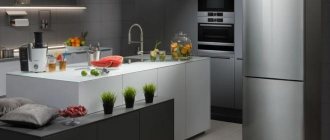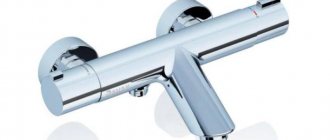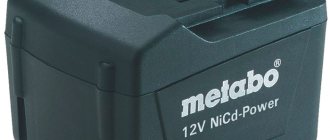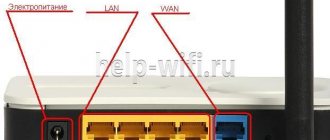When assembling a computer, attention is paid to every parameter. Experienced users know that the cooling system plays an important role. Only through its proper organization can stable operation be achieved even under maximum workload. However, choosing quality components can be difficult. Some models will eventually begin to make noise during operation, which will increase the noise level, while others may simply break after a few months. To prevent this from happening, the editors of the YaNashla website have prepared for you a rating of the best processor coolers for 2021.
How to choose a CPU cooler
The CPU cooler must be chosen carefully. Otherwise, he will not cope with his “responsibilities.” Overheating of the processor, in turn, leads to a drop in performance, shutdown the computer, or damage the chip itself.
Active, passive and liquid cooling
Cooling can be organized in one of three types - active, passive and liquid.
Active cooling system
involves the use of a radiator and fan. The first is installed on the processor. The radiator plumage is heated by the “chip”, after which it is cooled by air flows. The efficiency of an active cooling system depends on the materials from which the heat pipes are made, as well as on the performance of the fan.
Thus, the most effective are copper heat-water tubes with copper or aluminum fins. But exclusively aluminum radiators are suitable for cooling only old or budget processors like the Celeron or Pentium lines.
The disadvantage of the active cooling system is that it requires a constant flow of “cool” air inside the case. Otherwise, other components of the motherboard may overheat. Therefore, the system unit must be installed so that air circulates freely around it.
In addition, the efficiency of active cooling decreases when the radiator becomes clogged with dust.
The liquid cooling system is structurally similar to the active one. Only instead of a radiator, a contact plate and special tubes with a thermal fluid (often ordinary water) are used. The fans are placed in a separate block, which is placed outside the system unit. Thanks to this, there are no special requirements for installing the system unit, and the performance of the cooling system does not decrease over time.
The disadvantage of a liquid cooling system is that it is expensive.
Passive cooling
consists only of a radiator. Heat from the processor is dissipated naturally through convection inside the system unit. The performance of such a cooling system leaves much to be desired, so it is used exclusively with low-heating chips - old or mobile, including laptops or ultrabooks.
When choosing the type of cooling system, you should be guided by the purpose of the computer:
- An office “typewriter” with an old or low-power processor - a passive radiator is suitable;
- “Regular” or “gaming” computer – active cooling;
- Gaming computer with top components - liquid cooling.
What to look for when choosing a cooler
The main criteria when choosing a cooler are compatible socket and power dissipation.
- Since processors differ not only in performance, but also in size, it is important to consider socket and cooler compatibility. Socket - the size and form factor of the chip itself, as well as the placement of mounts for the cooling system on the motherboard. If it is not compatible with the cooler, installing the latter simply will not work. You can find out which socket is used from the technical characteristics of the processor and motherboard, as well as using the AIDA64 program or similar.
- Power dissipation is the performance of the cooling system. It shows how much heat can be removed by the cooler. The power dissipation must be greater than the thermal dissipation (TDP) of the processor. Both of these parameters are measured in Watts, so comparing them is not difficult.
The remaining parameters are optional and do not have much importance when choosing a cooler.
Manufacturer
The quality of the materials used, the durability of the cooler and additional functions of the cooling system depend on the manufacturer. Therefore, it is advisable to choose devices from trusted companies.
We included in our rating cooling systems from renowned manufacturers such as Noctua, Zalman, Thermalright, Deepcool, Prolimatech and Arctic Cooling.
Which CPU cooler is best to buy?
The correct choice of a high-quality cooling system for your PC depends on many factors: processor power, system unit design and, importantly, the budget allocated for the purchase. Among the proposed models you can find options for home and office, for gaming and work computers. The final decision on which cooler is best to buy is made by the user himself, based on his own preferences and the conditions of future operation of the device. At the same time, taking into account the opinions of experts will allow you to avoid unjustified mistakes and the risk of getting a low-quality cooler.
[Total: 5 Average: 3.4/5]
Rating of the best CPU coolers
| Nomination | place | Name of product | price |
| The best tower coolers for gaming systems and overclocking | 1 | Noctua NH-U14S | 5 500 ₽ |
| 2 | Zalman CNPS9900DF | 4 190 ₽ | |
| 3 | Noctua NH-D15 | 7 660 ₽ | |
| 4 | Thermalright Macho Rev.B | 5 090 ₽ | |
| The best mid-class coolers under 3000 rubles | 1 | Zalman CNPS10X Performa | 2 111 ₽ |
| 2 | Deepcool Assassin II | 3 970 ₽ | |
| 3 | Deepcool Gammaxx 300 | 1 150 ₽ | |
| 4 | Thermalright Macho Rev.A | 3 350 ₽ | |
| 5 | Noctua NH-L9i | 2 756 ₽ | |
| The best passive cooling systems | 1 | Prolimatech Megahalems Rev.C | 3 920 ₽ |
| Best CPU Water Cooling Systems | 1 | Thermaltake Water 3.0 Ultimate | 9 273 ₽ |
| 2 | Deepcool Captain 360 EX | 6 290 ₽ | |
| 3 | Arctic Cooling Liquid Freezer 120 | 5 990 ₽ |
Test participants
The participants in the test were tower cooling systems with heat pipes.
This is the most popular type of cooling system, known for many years, and during all this time it has been constantly improved. Moreover, this entire improvement process has led to the fact that outwardly all coolers are very similar to each other. The differences lie in the number of heat pipes used, the number and size of fans.
Main characteristics in the table. The price (if the model is sold in Russia or is not discontinued) is approximate, as of the beginning of February 2018.
| Name | Number of tubes | Vent. | Sk. vr., rpm | Mat-al | Dimensions, mm (WxHxD) | Weight, g | price, rub. |
| Antec A40 Pro | 4 | 1 x 92 | 800-2200 | Al | 100x136x75 | 570 | 1525 |
| Antec C400 | 4 | 1 x 120 | 800-1900 | Al | 125x155x76 | 830 | — |
| Arctic Freezer i11 | 3 | 1 x 92 | 500-2000 | Al+Cu | 108x130x90 | 408 | — |
| Arctic Freezer i32 | 4 | 1 x 120 | 1350 | Al | 150×123×95 | 641 | 3000 |
| Be quiet! Pure Rock Slim | 3 | 1 x 92 | 2200 | Al | 97x125x82 | 360 | 1620 |
| Be quiet! Shadow Rock Slim | 4 | 1 x 120 | 450-1500 | Al+Cu | 137x161x61 | 730 | 2800 |
| Cooler Master Hyper 212 LED | 4 | 1 x 120 | 600-1600 | Al | 120x160x84 | 734 | 1900 |
| Cooler Master Hyper 412S | 4 | 1 x 120 | 900-1300 | Al | 132x160x99 | 609 | 1710 |
| Cooler Master Hyper 612 Ver. 2 | 6 | 1 x 120 | 800-1300 | Al+Cu | 139x161x127 | 886 | 2900 |
| Cooler Master Hyper TX3i | 3 | 1 x 92 | 800-2800 | Al+Cu | 92x139x51 | 470 | — |
| Cooler Master MasterAir Maker 8 | 8 | 2 x 140 | 600-1800 | Al | 145x172x135 | 1350 | 7225 |
| Cooler Master MasterAir Pro 3 | 3 | 1 x 92 | 650-3000 | Al | 117x140x78 | 390 | 2240 |
| Cooler Master MasterAir Pro 4 | 4 | 1 x 120 | 350-2000 | Al | 129x159x84 | 472 | 2900 |
| Cryorig H5 Ultimate | 4 | 1 x 140 | 700-1300 | Al | 143x160x111 | 920 | 3400 |
| Cryorig H5 Universal | 4 | 1 x 140 | 700-1300 | Al | 143x160x98 | 863 | 3400 |
| Cryorig H7 Quad Lumi | 3 | 1 x 120 | 300-1600 | Al | 123x145x98 | 711 | 2334 |
| Cryorig M9i | 3 | 1 x 92 | 600-2200 | Al | 102x125x87 | 425 | 1520 |
| Enermax ETS-T40F-BK | 4 | 1 x 120 | 800-1800 | Al | 126x162x68 | 460 | 2900 |
| Enermax ETS-T50-AXE | 5 | 1 x 120 | 800-1800 | Al | 139x160x112 | 860 | — |
| Gelid Antarctica | 5 | 1 x 140 | 450-1500 | Al | 140x160x74 | 635 | 2425 |
| Gelid Phantom | 5 | 2 x 120 | 750–1600 | Al | 118×126×160 | 1000 | — |
| Gelid Phantom Black | 5 | 2 x 120 | 750–1600 | Al | 118×126×160 | 1000 | — |
| Gelid Snowstorm | 3 | 1 x 92 | 900-2200 | Al+Cu | 102x138x66 | 372 | 1285 |
| Gelid Tranquillo Rev.4 | 3 | 1 x 120 | 750-1600 | Al | 128x154x87 | 580 | 2050 |
| Gigabyte Aorus ATC700 | 3 | 2 x 120 | 500-1700 | Al | 133x158x59 | 670 | — |
| LC Power Cosmo Cool LC-CC-120-X3 | 6 | 3 x 120 | 600-1800 | Al | 158x170x140 | 1483 | — |
| MSI Core Frozr L | 4 | 1 x 120 | 500-1800 | Al | 140x155x84 | 960 | — |
| Noctua NH-D9L | 4 | 1 x 92 | 400-2000 | Al+Cu | 95x110x95 | 531 | 3200 |
| Noctua NH-D15 | 6 | 2 x 140 | 300-1500 | Al+Cu | 150x165x161 | 1320 | 5300 |
| Noctua NH-U9S | 6 | 1 x 92 | 400-2000 | Al+Cu | 95x125x95 | 618 | 3760 |
| Noctua NH-U12S | 5 | 1 x 120 | 1500 | Al+Cu | 125x158x71 | 755 | 3900 |
| Noctua NH-U14S | 6 | 1 x 140 | 1500 | Al+Cu | 150x165x78 | 935 | 4660 |
| Phanteks PH-TC12DX White | 4 | 2 x 120 | 600-1800 | Al | 126x157x107 | 868 | — |
| Phanteks PH-TC14PE Black | 5 | 2 x 120 | 700-1300 | Al+Cu | 140x171x151 | 1250 | — |
| Raijintek Themis | 3 | 1 x 120 | 100-1500 | Al+Cu | 122x158x75 | 472 | — |
| Scythe Byakko | 3 | 1 x 92 | 300-2300 | Al | 102x130x83 | 415 | 1360 |
| Scythe Fuma | 6 | 2 x 120 | 300-1400 | Al | 130x149x137 | 920 | 3500 |
| Scythe Katana 4 | 3 | 1 x 92 | 300-1500 | Al | 100x143x103 | 480 | 1700 |
| Scythe Mugen 4 PCGH Edition | 6 | 2 x 120 | 800 | Al+Cu | 130x157x138 | 625 | 3800 |
| Scythe Mugen 5 | 6 | 1 x 120 | 300-1200 | Al | 130x155x110 | 890 | 4200 |
| Scythe Mugen 5 PCGH Edition | 6 | 2 x 120 | 300-800 | Al | 133x155x130 | 1020 | — |
| Scythe Mugen Max | 6 | 1 x 140 | 500-1300 | Al+Cu | 145x161x111 | 870 | 3060 |
| Spire Kepler V2 | 2 | 1 x 92 | 2000 | Al+Cu | 97x125x76 | 377 | — |
| Thermalright Macho Direct | 5 | 1 x 140 | 300-1300 | Al | 158x152x142 | 810 | 2500 |
| Thermalright True Spirit 140 Direct | 4 | 1 x 140 | 300-1300 | Al | 140x161x102 | 810 | 2400 |
| Thermalright True Spirit 140 Power | 6 | 1 x 140 | 900-1300 | Al+Cu | 155x172x81 | 1040 | 2850 |
| Thermaltake Frio Extreme Silent 14 | 6 | 2 x 140 | 300-1200 | Al | 151x160x149 | 1320 | 4500 |
| Thermaltake Frio Silent 14 | 3 | 1 x 140 | 300-1200 | Al | 150x160x65 | 620 | 2130 |
| X2 Eclipse Advanced Black | 6 | 1 x 120 | 400-1500 | Al | 127x156x53 | 740 | — |
| Zalman CNPS11X Performa | 4 | 1 x 120 | 1000-1600 | Al | 132x154x95 | 450 | 1800 |
| Zalman CNPS9800 Max | 2 | 1 x 120 | 900-2000 | Cu | 120x150x60 | 488 | 2230 |
| Zalman CNPS9900 Max Blue | 3 | 1 x 135 | 900-1700 | Cu | 135x152x94 | 755 | 2930 |
However, there are differences. Thus, some models use a design in which a metal (aluminum or copper) base is in contact with the processor, through which heat is transferred to the tubes. Another approach involves direct contact of the heat pipes with the CPU cover.
The approach to installing fans and their number also differs. The most common option is one “Carlson” installed on the side and blowing air through the radiator fins. Often you can install a second fan on the opposite side “for exhaust”. Some models have such a pair initially.
There is another design, when the fan is installed in the middle, between the radiator blocks. It is possible to install another fan assembly, for example, “for blowing”.
The diameters of the fans used are 92, 120 or 140 mm. In the latter case, the total height of the cooling system is about 17 cm, which must be taken into account when purchasing. You need to check whether it is possible to install such a system in your case.
The best tower coolers for gaming systems and overclocking
A tower cooler is a type of active cooling system. Its design involves placing the fan on the side of the radiator, allowing heat to be dissipated more efficiently. The main thing is to choose the right direction for blowing hot air.
An important advantage of a tower cooler is maintaining the performance of the radiator over time. The plumage is not covered with dust, so the efficiency of the airflow does not decrease.
Noctua NH-U14S
Rating: 4.8
Why first place: High performance, wide socket compatibility, virtually silent operation.
Description: The Noctua NH-U14S tower cooler opens the rating - one of the best active cooling systems on the market. At a relatively low price, it provides a maximum power dissipation of 220 W, making it compatible with high-end processors. The mounting pad can be installed on chips of the most popular sockets of the LGA, AM and FM series, including LGA1151 (which is used in the Intel Atom Coffee Lake line).
The radiator design includes six direct contact copper heat conductor tubes and an aluminum tail. Moreover, the plates are not welded to the tubes, but are pressed with them, which ensures effective heat transfer.
The fan is based on a magnetically centered bearing. The maximum speed is 1500 rpm, and the regulator of this number is internal. The fan provides an airflow of 82.52 CFM, but the volume does not exceed 24.6 dB.
Advantages
- Highly productive and at the same time almost silent;
- The kit includes a mounting structure, bolts, thermal paste and everything you need for installation;
- The service life is 150 thousand hours, the manufacturer's warranty is 6 years.
Flaws
- Heavy;
- Large - can block the PCI connector or RAM slots;
- When used with overclocked or “hot” chips, it is better to replace the supplied thermal paste with another one.
Zalman CNPS9900DF
Rating: 4.7
Why second place: High performance and compact design, but relatively high noise level.
Description: In the Zalman CNP9900DF model, the manufacturing company used a radiator of a non-standard design for tower coolers. The tail is located radially, and the fans (there are two of them here) are somewhat “recessed” into the plates. According to the manufacturer, this design provides better heat dissipation and a smaller dissipation area while maintaining efficiency.
The nominal maximum power dissipation is 300 W. But this value is ensured only with open mounting; in a system unit with an installed side wall, this parameter drops by about 25-30%. However, even this is enough for most modern processors, including gaming ones.
The radiator is entirely copper – there are three direct contact heat pipes and tail plates. The fans are equipped with direct sliding bearings, providing rotation speeds of up to 1400 rpm with a nominal volume of up to 27 dB.
Advantages
- Compact, does not cover anything during installation;
- Cools stock processors well;
- The richest package in the rating, including thermal paste, fasteners, bolts and a screwdriver.
Flaws
- Not suitable for overclocked processors due to lack of performance;
- Loud noise under high load;
- Difficult to install, it is better to mount it on a removed motherboard.
Noctua NH-D15
Rating: 4.6
Why third place: Powerful, quiet, with 6 direct contact heat pipes, but relatively expensive.
Description: The Noctua NH-D15 cooler is a good solution for computers equipped with the latest generation multi-core processors (for example, Intel Core i9 or overclocked Intel Core i7). The device provides efficient cooling thanks to an air flow of 82.52 CFM, 6 direct contact copper heat pipes in the radiator and two fans with a rotation speed of up to 1500 rpm. At the same time, the cooler is compatible with most processors - it can be installed on almost all sockets of the LGA, AM and FM series.
Like the leader in the rating, this cooler is equipped with a proprietary radiator - copper heat conductor tubes are connected to an aluminum fin using the pressing method. The sole is also copper, polished to a mirror finish. Heat pipes are coated with nickel for better protection against corrosion.
The fans are based on bearings with magnetic centering, which ensures quiet operation.
Advantages
- Excellent cooling for both overclocked and multi-core processors;
- Easy installation. Everything you need for installation is included;
- Quiet fans even under high load.
Flaws
- Huge! It cannot be used with standard-height RAM or with cooling. Install in a narrow body - too;
- Boring, unattractive design;
- The radiator fin plates are flimsy, so the cooler requires careful installation.
Thermalright Macho Rev.B
Rating: 4.5
Why fourth place: A good cooler for stock, including multi-core, processors, but it may not cope with cooling overclocked ones.
Description: The rating is completed by one of the most classic tower coolers designed for use with gaming and multi-core (6, 8 cores) processors – Thermalright Macho Rev.B. The device dissipates up to 280 W of heating power, is equipped with six direct contact heat pipes, an aluminum radiator and one fan that operates almost silently even at maximum speed.
The fan rotation speed ranges from 300 to 1300 rpm, and the air flow intensity is 16.9-73.6 CFM, respectively. The speed controller is external, so the specific performance can be adjusted independently for the processor or tasks used. The cooler is compatible with almost all existing chips and can be installed on LGA, AM (including the latest AM4) and FM sockets.
Advantages
- High performance and quiet operation;
- Relatively low price (lower than predecessors on the list);
- Compact, but the fan can cover the first RAM slot.
Flaws
- Less productivity than that of “colleagues”;
- Assembly and installation can be tricky, but instructions are included;
- Tall, 165 mm, this is worth taking into account when choosing.
⇡#Test configuration, tools and testing methodology
The effectiveness of the Deepcool AS500 and its competitor was assessed in a system unit with the following configuration:
- motherboard: ASRock X299 OC Formula (Intel X299 Express, LGA2066, BIOS P1.90 dated November 29, 2019);
- processor: Intel Core i9-7900X 3.3-4.5 GHz (Skylake-X, 14++ nm, U0, 10 × 1024 KB L2, 13.75 MB L3, TDP 140 W);
- thermal interface: ARCTIC MX-4 (8.5 W/(m K);
- RAM: DDR4 4 × 8 GB G.Skill TridentZ Neo 32GB (F4-3600C18Q-32GTZN), XMP 3600 MHz 18-22-22-42 CR2 at 1.35 V;
- video card: MSI GeForce GTX 1660 SUPER Ventus XS OC 6 GB/192 bit, 1530-1815/14000 MHz;
- drives: for system and benchmarks: Intel SSD 730 480 GB (SATA III, BIOS vL2010400);
- for games and benchmarks: Western Digital VelociRaptor 300 GB (SATA II, 10000 rpm, 16 MB, NCQ);
- archival: Samsung Ecogreen F4 HD204UI 2 TB (SATA II, 5400 rpm, 32 MB, NCQ);
To evaluate the efficiency of cooling systems, the frequency of a ten-core processor on BCLK 100 MHz with a multiplier fixed at 40 and the Load-Line Calibration function set to the first (highest) level of stabilization was fixed at 4.0 GHz with a voltage in the motherboard BIOS of up to 0.985 V.
The TDP level was just over 200 watts. The VCCIO and VCCSA voltages were set to 1.050 and 1.075 V, respectively, CPU Input – 2.050 V, CPU Mesh – 1.100 V. In turn, the voltage of the RAM modules was fixed at 1.355 V, and its frequency was 3.6 GHz with standard timings 18-22-22-42 CR2. In addition to the above, several more secondary changes were made to the motherboard BIOS related to overclocking the processor and RAM.
Testing was carried out on the Microsoft Windows 10 Pro operating system version 2004 (19041.572). Software used for the test:
- Prime95 29.8 build 6 – to create a load on the processor (Small FFTs mode, two consecutive cycles of 13 minutes each);
- HWiNFO64 6.29-4210 – for monitoring temperatures and visual control of all system parameters.
A complete screenshot after completing one of the testing loops looks like this.
The CPU load was created by two consecutive Prime95 cycles. It took 14-15 minutes between cycles to stabilize the processor temperature. The final result, which you will see in the diagram, is taken as the maximum temperature of the hottest of the ten cores of the central processor at peak load and in idle mode. In addition, a separate table will show the temperatures of all processor cores, their average values and the temperature delta between the cores. The room temperature was controlled by an electronic thermometer installed next to the system unit with a measurement accuracy of 0.1 °C and with the ability to hourly monitor changes in room temperature over the last 6 hours. During this testing, temperatures ranged from 25.7°C to 26.1°C.
The noise level of cooling systems was measured with an electronic sound level meter "OKTAVA-110A" from zero to three o'clock in the morning in a completely closed room of about 20 m2 with double-glazed windows. The noise level was measured outside the system case, when the only source of noise in the room was the cooling system and its fans. The sound level meter, fixed on a tripod, was always located strictly at one point at a distance of exactly 150 mm from the fan rotor. The cooling systems were placed at the very corner of the table on a polyethylene foam backing. The lower measurement limit of the sound level meter is 22.0 dBA, and the subjectively comfortable (please do not confuse with low!) noise level of cooling systems when measured from such a distance is around 36 dBA. We take the value 33 dBA as a conditionally low noise level.
We will compare the efficiency and noise level of Deepcool AS500 with two cooling systems of the same class and the same type. These are single-tower coolers, equipped with one 140 (135) mm fan and comparable in cost to the hero of today’s article: Scythe Mugen MAX (SCMGD-1000) costing RUB 5,299. and be quiet! Dark Rock 4 (BK021) costs 5,590 rubles.
In addition to testing with stock fans, the Deepcool AS500 and its two competitors were additionally tested with a pair of Noctua NF-A15 HS-PWM chromax.black fans from the Noctua NH-D15 chromax.black supercooler. The latter is also included in the tests, but not for comparison, but as a reference air cooling system for the central processor.
Let us add that the rotation speed of all cooling system fans was adjusted using
with an accuracy of ±10 rpm in the range from 800 rpm to their maximum in increments of 200 rpm.
The best mid-class coolers under 3000 rubles
Zalman CNPS10X Performa
Rating: 4.9
Why first place: Tower cooler, direct contact between heat pipes and the processor, rotation speed up to 2000 rpm.
Description: The top-ranking Zalman CNPS10X Performa cooler has a tower design, thanks to which it can cool even high-performance processors. In particular, it is equipped with five copper heat pipes in direct contact with the base plate, an aluminum radiator and a 120 mm fan with a rotation speed of 900 to 2000 rpm.
The fan is equipped with a classic plain bearing, but thanks to optimization, the noise level even under maximum load is up to 36 dB. In this case, the speed controller is internal, so the rotation speed is set automatically by the cooler.
The cooler is compatible with both modern and classic sockets. So, it can be installed on almost all LGA models (including LGA1151 and even LGA775), AM, FM and S. Additional mounts can be purchased for other sockets.
Advantages
- The design of the radiator allows for good cooling of processors even at low speeds;
- Quiet operation;
- Durability.
Flaws
- Difficult, inconvenient fastening. It is advisable to place the cooler on a removed motherboard with RAM already installed;
- It is advisable to replace the supplied thermal paste;
- Bulky and heavy.
Deepcool Assassin II
Rating: 4.8
Why second place: Powerful, efficient cooling system, but more expensive than other models in the rating.
Description: Deepcool Assassin II is a tower cooler with two fans and eight copper heat pipes. Thanks to this, the device provides good cooling even for gaming and overclocked processors, and is also compatible with almost all used sockets.
The cooler radiator, consisting of two modules, is made of aluminum plates. Copper heat conductor tubes are connected to them by pressing. This ensures good heat transfer and dissipation from the processor.
Two 140mm fans can rotate at speeds of 300-1400 rpm and are based on hydrodynamic bearings, ensuring low volume even under high load. Maximum – 27.3 dB.
The cooler, despite the low price, has high performance. For example, the Intel Core i7-7800X processor heats up to 54 degrees under peak load in stress tests.
Advantages
- High performance;
- Silence of work;
- Rich equipment with a large number of pads, mounts, and thermal paste.
Flaws
- Relatively complex assembly;
- Large-sized, can cover power connectors or various functional elements of the motherboard;
- The cooler power supply hub is inconvenient, it dangles, you need to glue it to the case yourself.
Deepcool Gammaxx 300
Rating: 4.8
Why third place: Ultra-budget tower cooler, good combination of price and quality.
Description: The Deepcool Gammaxx 300 cooler, which occupies the “middle” of the rating, has an excellent combination of price and quality. Of course, it is not very suitable for overclocked or gaming processors, but it copes well with heating mid-range chips or with average heat dissipation. In particular, the maximum power dissipation of the device is 125 W.
The cooler is compatible with almost all processor models. Necessary soles and fastenings included. The radiator is made of aluminum plates, which are complemented by three copper heat pipes.
The cooler fan is equipped with a proprietary hydrodynamic bearing, which ensures minimal operating volume. In particular, even under load it makes 21 dB noise. The rotation speed is 900-1600 rpm (the regulator is external, i.e. it can be adjusted), and the air flow is 40 CFM.
Advantages
- Simple, quick installation;
- Minimum operating volume;
- Rich equipment.
Flaws
- Relatively large-sized;
- The contact pad is made of aluminum, into which direct contacts of heat conductor tubes are built;
- Inconvenient latches with plastic “ears” that can break.
Thermalright Macho Rev.A
Rating: 4.7
Why fourth place: Quiet, efficient and comfortable. But the improved version (Rev.B) costs only a few hundred rubles more, so it’s better to take it.
Description: Tower cooler with the highest performance in this rating segment. In particular, the maximum power dissipation of the device is as much as 280 W, which makes it compatible even with gaming and overclocked processors. Includes mounts and pads for LGA sockets (including LGA775 and LGA1151), AM and FM.
The radiator configuration includes 6 copper heat conductor tubes with direct contact. The tail is made of aluminum sheets. The plates are connected to the tubes by pressing rather than welding.
The cooler is equipped with one 140 mm fan. Rotation speed – 900-1300 rpm. The proprietary bearing makes the fan quiet - even at maximum load it makes 21 dB noise. In this case, the air flow is up to 73.6 CFM.
The speed controller is external, so you can customize it yourself to suit the installed processor and usage scenario.
Advantages
- Quiet;
- Rich equipment with a branded screwdriver and the necessary fasteners;
- High performance.
Flaws
- There are many revisions, and there are even ones with an aluminum sole without direct contact of heat conductor tubes;
- Large, may not fit into some cases;
- Assembly is not easy for beginners and there are no instructions in Russian.
Noctua NH-L9i
Rating: 4.6
Why fifth place: The only regular (“horizontal”) cooler in the ranking, but with very high power. Compatibility is limited.
Description: The Noctua NH-L9i cooler is designed for Intel Core i3-i7 series processors installed in LSI sockets. It is made in a traditional design, which involves placing a fan above the radiator. As a result, the cooler's power dissipation is relatively small and amounts to 65 Watts.
The cooler's radiator is made of aluminum plates, placed by pressing on a copper heat conductor tube with direct contact. The fan is equipped with a proprietary low-noise bearing with magnetic centering, thanks to which the cooler's operating volume does not exceed 23.6 dB even at 2500 rpm. The speed itself is adjustable from 300 to 2500 rpm. The airflow generated by the fan is 33.84 CFM. The speed regulator is built into the cooler and operates automatically.
The cooler is highly reliable – the trouble-free operation time is 150 thousand hours, and the manufacturer’s warranty is 6 years.
Advantages
- Low-profile design, can be installed in narrow system units;
- Low operating volume and good performance (even the Intel Xeon E3-1225 v5 can cool down);
- Simplest installation.
Flaws
- The mounting bolts are fixed when the motherboard is removed;
- Relatively high price;
- Not suitable for overclockable or unlocked processors.
The best passive cooling systems
Prolimatech Megahalems Rev.C
Rating: 4.9
Why it: Copper-aluminum radiator designed specifically for passive cooling systems.
Description: The Prolimatech Megahalems Rev.C cooler was designed specifically for use as a single cooling device. It features a massive base with a polished copper sole, to which six copper heat conductor tubes are attached by pressing, and an aluminum radiator with a wide distance between the plates, ensuring free air circulation.
The cooler is compatible with the vast majority of Intel LSA sockets, including the newest ones, as well as AMD AM and FM.
Even without a fan, it provides as much cooling as some of the other devices in the ranking, delivering up to 40-50W of passive dissipation. However, if you wish, you can attach a fan to it – 120 and 140 mm models are suitable. Brackets for fixing it are included with the radiator.
Advantages
- Effective heat dissipation thanks to a massive base and 6 copper tubes;
- Wide space between the radiator plates for better air circulation;
- Massive base.
Flaws
- Tall radiator, may not fit into a thin case;
- Dense placement of heat pipes;
- The “two towers” design has less rigidity than a monolithic one.
Best CPU Water Cooling Systems
Thermaltake Water 3.0 Ultimate
Rating: 4.9
Why first place: A cooling system that can cool the processor even without fans. Of course, there are three of them.
Description: The rating opens with one of the most productive water cooling systems – Thermaltake Water 3.0 Ultimate. The device is equipped with three fans that rotate at speeds of up to 2000 rpm. This ensures effective cooling even for overclocked processors. In addition, up to 6 additional fans can be installed.
The contact pad is made of aluminum and copper. The mount is compatible with the most common sockets, including LGA, AM and FM. Adapters for other types of processors are commercially available.
The installed fans are quite quiet - even at a maximum rotation speed of 2000 rpm, they are noisy by 20 dB. In this case, the air flow passing through the cooling system is 99 CFM. The minimum rotation speed of coolers is 1000 rpm.
The system can also operate in passive mode – with the coolers turned off.
Advantages
- Quiet but powerful cooling system;
- Quiet pump;
- Compact and easy to install.
Flaws
- Over time, the noise level increases, it is recommended to replace the fans or install a reobass;
- It may not be able to cope with cooling processors with a heat dissipation of more than 250-300 W (overclocked);
- A bit expensive.
Deepcool Captain 360 EX
Rating: 4.8
Why second place: Gaming water cooling system, the main drawback of which is the price.
Description: Deepcool Captain 360 EX could top the rating if it were not for its relatively high price (even for water cooling systems). It is very productive - the dissipated power is 220 W. At the same time, thanks to the use of proprietary hydrodynamic bearings in the fans, the system is characterized by quiet operation - a noise level of up to 31.3 dB at a rotation speed of 1800 rpm and an air flow of 76.52 CFM.
The contact plate of the water block is made of polished copper. The pump is equipped with a ceramic bearing, which provides a service life of 120 thousand hours. It works silently.
The cooler also boasts a unique water block design. The cooling system is compatible with the vast majority of LGA, AM and FM sockets. All necessary fasteners are included.
Advantages
- High performance and durability;
- Quiet operation under everyday load;
- Attractive design;
- Processor temperature fixation mode.
Flaws
- Non-switchable bright red illumination of the cooling system;
- Large radiator;
- Rigid hoses;
- A little expensive.
Arctic Cooling Liquid Freezer 120
Rating: 4.7
Why third place: Dual-fan cooling system with fast pumping and high efficiency.
Description: The rating is completed by a rather unusual liquid cooling system – the Arctic Cooling Liquid Freezer 120. It differs from other devices in its compact unit with a radiator and fans, which is significantly smaller in size than traditional “panels”. However, it copes with the task of cooling the processor “excellently” - the rated power dissipation is 300 W.
The fans can rotate at speeds from 500 to 1350 rpm, provide an air flow of 74 CFM, are equipped with durable hydrodynamic bearings and are relatively quiet - at maximum load the noise level is 30-35 dB.
The water block is equipped with a copper contact plate and a built-in pump that rotates at a speed of 5400 rpm. Thanks to this, the cooler can be used even in passive mode. However, the pump can still be heard from the housing.
Advantages
- Rich equipment with high-quality additional items;
- Quiet, efficient operation;
- Suitable for overclocked processors.
Flaws
- Pump speed is too high, which can reduce reliability and cause noise;
- Heavy and bulky;
- Relatively expensive.
⇡#Noise level
Based on the noise level, the four coolers were divided into two groups: be quiet! Dark Rock 4 and all the others, where the first has a huge advantage over all competitors. An ideally quiet fan gives Dark Rock 4 a colossal speed advantage at the same noise level. For example, at the limit of subjective comfort of 36 dBA, the Deepcool AS500 fan operates at 870 rpm, and the Scythe Mugen MAX spinner operates at 830 rpm, while the be quiet! rotates at 1090 rpm. The same situation occurs at the limit of conditional noiselessness of 33 dBA. And yet, of the trio of single-tower coolers, the Deepcool AS500 takes an honorable second place in terms of noise level, even though we were hoping for more impressive results. Let us add that vibrations of the impeller or crackling of the electric motor of the Deepcool TF140S PWM fan were not detected throughout the entire range of operation and in two orientations (horizontal and vertical).
Conclusion
The new Deepcool AS500 can confidently be called a successful processor cooler, combining all the components necessary for such a device. It successfully copes with cooling processors with a thermal power of 220 watts and is able to do this without unnecessary noise. If the efficiency is not enough, then you can install a second fan on the radiator and thereby reduce the processor temperature by up to 5 degrees Celsius. The cooler is fully universal, equipped with a reliable mount with high clamping force, will not interfere with tall heatsinks on RAM, and comes with reusable thermal paste.
The aesthetic component of the Deepcool AS500 is also at its best: a nickel-plated radiator and sparkling heat pipes, an original 140 mm fan with interesting blades and, of course, backlighting with synchronization or a control panel. For the sake of objectivity, it must be said that, apart from the backlight, Deepcool did not do anything new in the AS500; the same narrow single-tower coolers with five or six heat pipes were produced earlier and are being produced now (and even have much more technologically advanced radiators). However, they most often do not have backlighting. So another good cooler on the market is a plus for all of us for choice and strengthening competition in this market segment.










